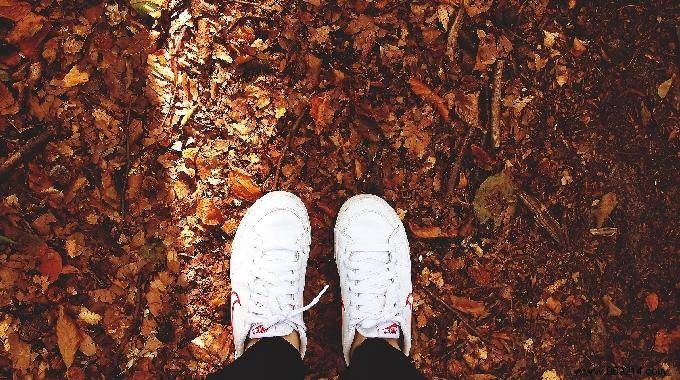
Come on, admit it:picking up dead leaves is a real chore!
Besides, the trees laugh at us, because they don't all lose their leaves at the same time.
The risks associated with dead leaves are multiple:slipping on wet leaves or deprivation of light for your lawn.
In short, you have to arm yourself with your best rake and get to work!

Some put them in a heap and then pick them up with the strength of their arms. Others are equipped with machines that suck up and grind the leaves.
My tip:they are easier to handle and pack when wet.
However, did you know that these leaves are a real gold mine? So before you get rid of that gold that fell from the sky, think about this:
Potting soil is sold at a very high price in garden centres. Here's how to make your own with your dead leaves. My grandfather used to say that leaf soil is the best for the vegetable garden.
a. In a composter, make a layer of about 30 cm of dead leaves.
b. If you have any, grind nettles to speed up decomposition.
c. Put back a layer of dead leaves.
d. Put on top, a layer of old potting soil or soil from your garden.
e. Leave to decompose for 5 months (until spring).
f. Stir everything once.
g. Leave to stand again to promote decomposition.
Your soil will be ready for next spring. Ideal for your beds or your seedlings. And it's free!
A pile of leaves is an ideal hiding place for a number of useful little insects, such as earthworms, which are very useful for aerating the soil or for fishing.
a. Make a pile of leaves in a corner of your garden.
b. Stir the pile from time to time.
c. Water it during dry periods.
d. You can enrich it with some household waste.
e. Let it sit and decompose.
These heaps of leaves (which will turn into compost little by little) allow heaps of small animals to hide or hibernate. And other bigger ones like hedgehogs will take shelter there.
Be careful not to store the leaves of diseased trees (peach blister, larvae, powdery mildew, etc.). You would only be encouraging the proliferation of these bacteria or fungi by helping them overwinter.
The leaves are a natural insulating layer for certain other plants. Do not throw them away and use them to "mulch". Dahlias love it, for example, and leeks too.
a. Make a layer of about 15 cm of leaves in the desired place.
b. Leave in place until early spring.
This layer of leaves prevents the germination of certain light-deprived weeds.
Remember to remove the remains of leaves as soon as the sun begins to heat up.